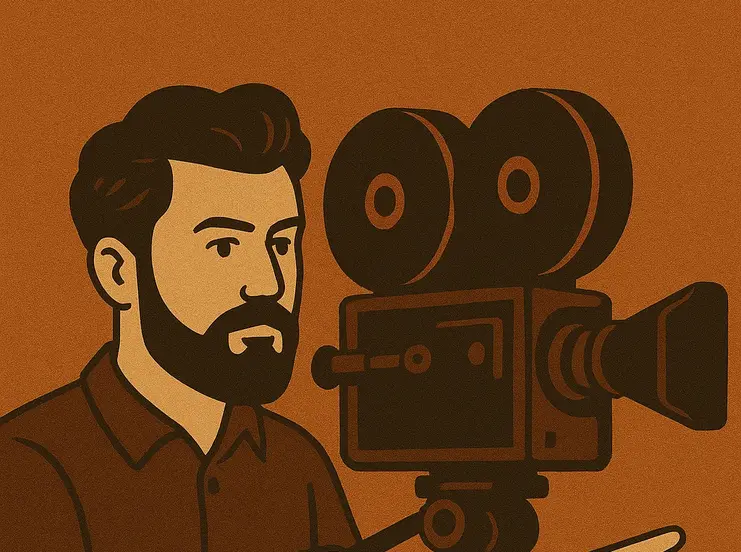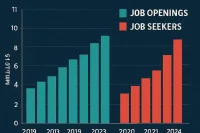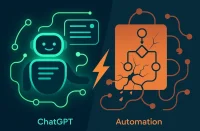Career advice for filmmakers after AI — what changes now
Career advice for filmmakers after AI starts with a reality check: tools like Sora move faster than most production cycles. In minutes, you can now generate passable ad shots, skylines, and b‑roll. That doesn’t kill filmmaking—but it does compress budgets, shrink technical roles at the low end, and reward human‑only advantages: real events, collaboration on set, taste, judgment, and audience trust. If you adapt now, 2025 can still be a breakout year.
What Sora can already do (and why it matters)
Text-to-video is “good enough” for many use cases
Early tests show convincing skyline shots, car follow clips, driver closeups, wheel macros, and drone‑style angles. Logos and physics can glitch, but casual viewers won’t notice in a 3–5s cut. This is the worst the tech will be—expect rapid improvement.
Where budgets shift first
Low‑budget product spots, generic b‑roll, stock footage, simple motion graphics, and basic color/sound cleanup. Agencies will swap day rates and permits for prompt time and AI supervision.
Jobs most at risk
Short term
Stock footage shooters, generic drone ops, real‑estate video, simple product ads, entry‑level motion graphics, basic color/sound finishing.
Medium term
Broader post tasks that can be standardized: “grade in the style of…”, dialogue cleanup, templated VFX, and basic recuts for social.
Jobs with resilience
Documentaries, news, sports, weddings
AI can fake style; it can’t fake an event that truly happened. Real‑world capture still needs people and trust.
On‑set, on‑location roles
Sound, makeup, set dec, production management, and cinematography in difficult environments. Robotics isn’t ready to replace presence and improvisation.
Top‑end creative collaboration
Directors, DPs, senior editors, creative directors—teams where taste, timing, and shared authorship matter. Elite projects will keep humans in the loop.
Hire Talent in Resilient Creative Roles
From documentaries to live sports, weddings, and on-set productions—real-world capture can’t be automated. Employers can secure the trust, creativity, and presence that only humans bring to sound, makeup, cinematography, and production leadership. Post your job on WhatJobs today and connect with resilient creative professionals who thrive where AI can’t replace authenticity.
Post a Job Free for 30 Days →The new role: AI supervisor/wrangler
What it is
Owns prompts, style control, iterations, and QA; translates director intent into consistent AI outputs; integrates shots into the editorial pipeline.
Why it matters
Bridges senior creatives and toolchains. As AI integrates, someone must ensure reproducibility and aesthetics—not just “one cool shot.”
Your 30–60–90 day plan
30 days
Pick a lane (docs/events, on‑set craft, AI supervision, or editorial leadership). Build a 10‑prompt library for your niche. Publish 2 AI tests + 1 real shoot showing your taste.
60 days
Ship a 2–3 minute piece: real‑world core + AI assists (skylines, inserts, transitions). Document pipeline, costs, and time saved.
90 days
Pitch a paid pilot to two clients: “same budget, 30% more coverage” or “48‑hour turnaround” using your hybrid workflow.
Position yourself as a storyteller, not a technician
Build a collaborator network
Writers, DPs, editors, producers—people hire teams they trust. Face‑to‑face beats cold emails. Return clients beat first‑time clients.
Escape the low‑budget trap
Invest in spec pieces that target higher tiers. Package outcomes (retention, conversion, earned media), not hours.
Practical workflow stack (2025)
Shooting
Capture irreplaceable reality: interviews, events, behind‑the‑scenes, locations.
AI assists
Text‑to‑video for filler shots, stylized b‑roll, transitions; AI cleanups for audio/color; motion templates for speed.
Editorial
Keep human control of narrative, pacing, character, and emotion. Test with small audiences before final export.
FAQs
Q: What’s the best career advice for filmmakers after AI if I’m new?
A: Anchor on reality capture (docs/events), learn one on‑set craft, and add AI supervision to your toolkit. Publish hybrid pieces to prove value.
Q: How do I price projects in a world of career advice for filmmakers after AI?
A: Price outcomes (speed, coverage, distribution assets). Offer “AI‑assisted upgrades” rather than line‑item hours.
Q: Which roles remain strong within career advice for filmmakers after AI?
A: Documentary crews, on‑location crafts, senior editorial, and creative direction. AI supervisors become a key new role.
Q: What should I learn first for career advice for filmmakers after AI?
A: A capture specialty (camera/sound) + a prompt library + an AI video tool. Then ship work monthly.
Live example — user point of view
I pitched a doc‑style brand story: shot interviews and factory floor, filled b‑roll gaps with AI, and delivered edits in 72 hours. The client booked a quarterly retainer because my “after AI” workflow doubled content at the same budget.




